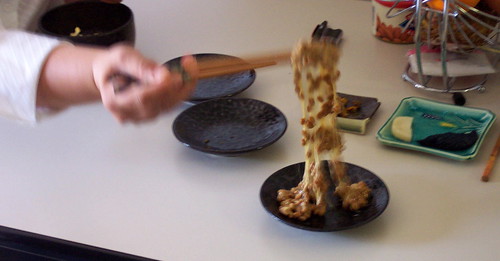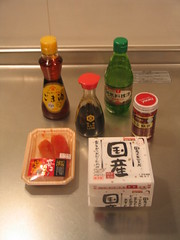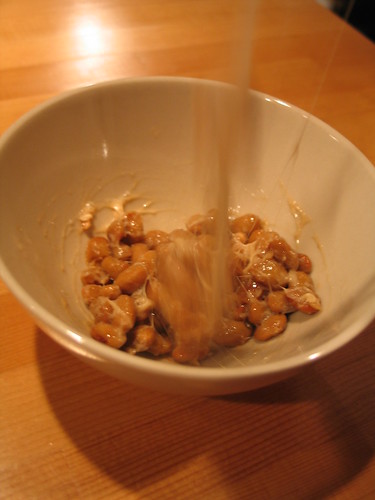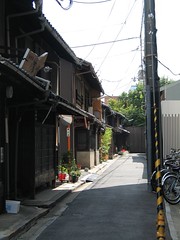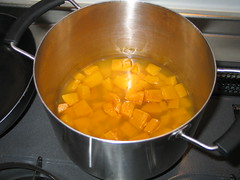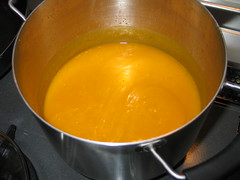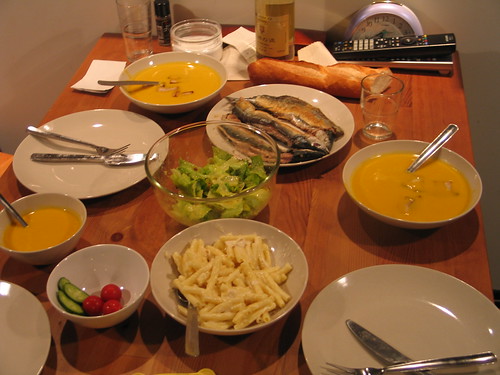A couple of weeks ago, my wife picked up the latest edition of meets regional magazine, which seems to be aimed at semi-hip young men in the Kansai region. Just like me! No, actually for men quite a bit younger than me, who listen to cool music, dress funky, and like to eat a bit wild. I squeeze in because I’m male, in Kansai, and eat anything.
This issue was about spicy food. Now as I noted in passing a few posts back, the usual word for “spicy” is karai (辛い), which does mean “spicy” but not necessarily hot-spicy. So all kinds of Indian food qualify, as would pretty much any American barbecue, as does some very salty food like salt tempura. But mostly it does mean hot-spicy, and thus most of the restaurant reviews are of Korean, Chinese, Indian, Mexican, Carribean, and so forth places that do fiery dishes.
This being a magazine for hip Kansai men, most of the entries are for Osaka, but there are some in Kyoto and I carefully copied out the addresses and found them on my little pocket atlas. (No mean trick, this: Japanese addresses can be pretty difficult to find anyway, but Kyoto addresses are often exceedingly difficult—so much so that our address for the post office isn’t the official government address, because it doesn’t include enough information to find us without having a good map and knowledge of the city, something apparently the government lacks. We spent an hour waiting for the guy in the ward office to figure out our official address, and in the end he got it wrong. But I digress.)
A week ago or so, we tried PURUDA, a Korean place up on Rokkōji-dōri, which was quite good but I forgot to take photographs. We only had lunch anyway, and you have very limited options for the lunch menu. I’ll go back sometime for dinner, maybe, although I’ve seem some much cooler-looking Korean places.
Today we went to the zoo, which is near Heian Jingu (平安神宮), the enormous shrine and garden up in the northeast. At the corner between the shrine and the zoo, just up from the main road, is Dragon Gate Chinese Restaurant (中華料理龍門, which I’d guess is locally read chuka-ryōri ryūmon), a Sichuan (四川) place with several branches, one of which turns out to be very close to our house.
Following the recommendation of meets magazine, I had the spicy beef noodles. My wife had a mapo doufu set lunch, which included a little soup, rice, and pickle, as well as a little deep-fried meat thing that we cannot identify. Sam was tricky here, because he said he wanted soup and rice, but they didn’t have any soups we thought he’d like much; we got him a slightly crab-flavored egg-drop soup, and that seemed to work out more or less fine. We also got some gyōza, steam-fried potsticker dumplings.


The gyōza were good, but nothing to write home about. I did find it interesting that the dipping sauce consisted solely of garlic, hot chile oil, and vinegar (rice, I think), with no hint of soy. In my extensive experience of gyōza (which I, having lived in Taiwan for more than a year, will always think of as jiaozi), soy is always sort of the foundation of the sauce, so this was new to me. Of course, on the bus home, it occurred to me that maybe you were supposed to add soy to this, as you have a soy sauce thing on your table already. I don’t know. It was fine, regardless, but as I say, nothing to write home about. 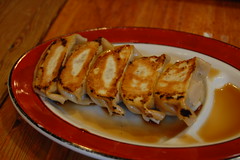 You’ll note from the picture the standard Japanese way to serve them: you cook five or six pressed closely together in oil on a small nonstick fry pan, then add water about halfway up the sides and cover, and when the water boils off you pick them up, stuck together in a line, and serve them crispy-side up on an oval plate. I’ve never seen this in Taiwan, but everyone does it in Japan. I include here an example that wasn't from our lunch, but rather from "su-lin" photostream at Flickr, which is a pretty good representation of how they're usually presented at Japanese restaurants.
You’ll note from the picture the standard Japanese way to serve them: you cook five or six pressed closely together in oil on a small nonstick fry pan, then add water about halfway up the sides and cover, and when the water boils off you pick them up, stuck together in a line, and serve them crispy-side up on an oval plate. I’ve never seen this in Taiwan, but everyone does it in Japan. I include here an example that wasn't from our lunch, but rather from "su-lin" photostream at Flickr, which is a pretty good representation of how they're usually presented at Japanese restaurants.
All told, Dragon Gate gets our thumbs up. It’s good Sichuan food, done well, at very reasonable prices. I’ll have to go for dinner some time and see whether the menu gets more extensive then, as is common, because I did think that the menu we saw was a bit short. In any case, if you like Sichuan food and are in Kyoto, they have four outlets, so try one.


